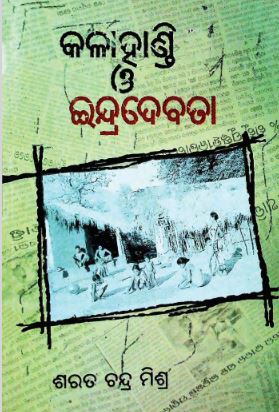Published in 2005, “Kalahandi O Indradebata,” a remarkable novel by Sarat Chandra Misra, serves as an insightful reflection on the socio-cultural dynamics of Odisha, particularly focusing on the Kalahandi region. Misra, a prolific writer known for his keen observational skills and deep understanding of human emotions, uses this work to address broader themes of poverty, resilience, and the intricate relationship between man and nature.
Set against the backdrop of one of Odisha’s most picturesque yet economically challenged areas, the novel intricately unravels the lives of its characters, primarily emphasizing their struggles and aspirations. Kalahandi, often depicted in the media as a region marred by poverty and neglect, comes alive through Misra’s vivid descriptions and compelling narrative. He transcends the simplistic portrayal of the region, painting a picture of a land rich in culture, traditions, and undying spirit.
The protagonist, much like the land itself, embodies the essence of resilience. Misra masterfully constructs a storyline that allows readers to journey through the protagonist’s trials, showcasing the harsh realities of life in Kalahandi, where droughts and economic hardships are interwoven with hopes and dreams. The characters are not mere representations of despair; instead, they are resilient individuals who fight against their circumstances, embodying the indomitable human spirit.
One striking aspect of “Kalahandi O Indradebata” is its exploration of mythology and spirituality. The title itself refers to Indradebata, the rain god, symbolizing the people’s eternal hope for better times and prosperity. Misra cleverly intertwines elements of local belief systems and practices, grounding his narrative in the rich cultural heritage of Odisha. This integration of spirituality not only adds depth to the characters’ motivations but also reflects the historical context of reliance on nature and its bounties for survival.
Misra’s narrative style is engaging, combining lyrical prose with poignant dialogues that breathe life into the characters. His meticulous attention to detail allows readers to visualize the scenic beauty of Kalahandi—the rolling hills, lush forests, and the periodic scars left by drought. This vivid imagery does not merely serve an aesthetic purpose; it reinforces the emotional weight of the story, reminding readers of the connection between the environment and the lives of those who inhabit it.
Furthermore, “Kalahandi O Indradebata” serves as a critique of societal structures and governmental policies affecting rural communities. Through the lens of its characters, Misra delves into issues such as inequality, lack of resources, and the bureaucratic apathy that often pervades regions like Kalahandi. The novel stands as a reminder that literature can be a powerful tool for social commentary, encouraging readers to engage with the pressing issues facing contemporary society.
In conclusion, Sarat Chandra Misra’s “Kalahandi O Indradebata” is more than just a novel; it is a poignant exploration of human struggle and resilience set against the rich tapestry of Odisha’s cultural landscape. With its blend of realism, spirituality, and social critique, the book ignites a sense of empathy and awareness, urging us to recognize and appreciate the complexities of life in regions often overlooked. Misra’s storytelling resonates deeply, providing readers with both a window into the lives of Kalahandi’s people and an invitation to reflect on their own societal responsibilities.
Books Info
| Books name | Kalahandi O Indradebata/କଳାହାଣ୍ଡି ଓ ଇନ୍ଦ୍ରଦେବତା |
| Author | Sarat Chandra Misra |
| No Of pages | 169 |
| Publisher | New H Publishers |
| Publication | 2005 |
| Printed At | Shubham Printers |
| Distributor | NA |

